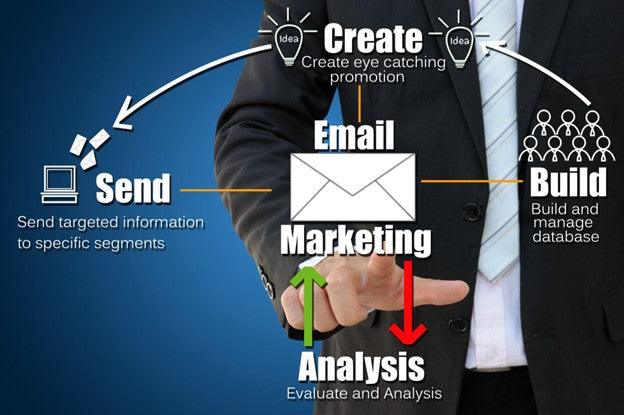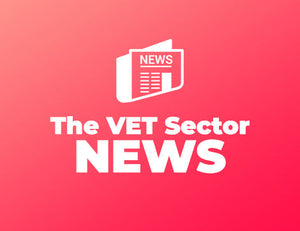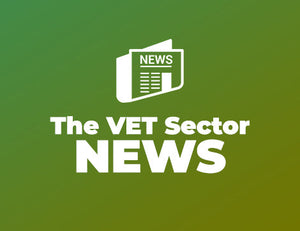
Email marketing as a powerful tool for business growth
SUKH SANDHUEmail marketing is a powerful tool for businesses and organisations to communicate with their target audience and promote their products or services. It is also an essential part of the marketing strategy for registered training organizations (RTOs) in Australia, who use email campaigns to connect with current and prospective students, promote their courses, and share important information.
However, managing email campaigns can be a daunting task, especially for staff members who may not have much experience in this area. In this article, we will explore some ways to support staff members responsible for email marketing tasks in RTOs.
Provide Training
It is important to ensure that staff members responsible for email marketing have the necessary skills and knowledge to perform their duties effectively. Providing them with training on email marketing best practices can help them create engaging content, segment the email list, and track and analyse results.
There are many resources available online for email marketing training, including online courses, webinars, and workshops. Organisations like HubSpot and Digital Marketer offer comprehensive courses on email marketing that cover everything from the basics to advanced strategies. RTOs can also hire a consultant or agency with expertise in email marketing to provide customised training for their staff.
Use Email Marketing Tools
There are several email marketing tools available that can help staff members create and manage their campaigns. These tools often include pre-designed templates that can be customised to fit the brand and message of the campaign. Popular email marketing tools include Mailchimp, Constant Contact, and Campaign Monitor.
These tools allow staff members to easily create and send emails, segment their email list, and track and analyse results. They also offer features such as automation, A/B testing, and personalization, which can help improve the effectiveness of email campaigns.
Provide Feedback
Regular feedback and suggestions for improvement can help staff members refine their email marketing skills and improve the effectiveness of their campaigns. Set up regular check-ins to review the results of past campaigns, identify areas for improvement, and discuss new strategies and tactics.
When providing feedback, be specific and provide actionable suggestions for improvement. For example, if the open rate of an email campaign was low, suggest ways to improve the subject line or the timing of the email.
Help with Images
Creating visually appealing emails is crucial for engaging recipients and increasing the success of email campaigns. Offering assistance in sourcing or creating high-quality images that can be used in email templates can be helpful.
RTOs can provide guidance on how to use images effectively, including how to optimise them for email and ensure they are legally obtained. Using images that are relevant to the course or training being promoted can help grab the reader's attention and increase engagement.
Share Resources
There are many resources available online that can help staff members improve their email marketing skills. Share relevant articles, guides, and tutorials with the staff member responsible for email marketing, and encourage them to read and implement the tips and strategies they learn.
Encouraging staff members to attend webinars or online events related to email marketing can also be beneficial. These events can offer insights from experts in the field and provide opportunities to ask questions and connect with other professionals in the industry.
Legislative Requirements and Guidelines for Email Marketing in RTOs
While email marketing is a powerful tool for RTOs, it is important to ensure that email campaigns comply with legislative requirements and guidelines set out by regulatory bodies. The Australian Communications and Media Authority (ACMA) has established the Spam Act 2003, which sets out the rules for sending commercial electronic messages, including email.
Under the Spam Act, commercial electronic messages must:
- Be sent with the recipient's consent
- Identify the sender
- Include a functional unsubscribe facility
- Be relevant to the recipient
RTOs should also follow the guidelines set out in the National Code of Practice for Providers of Education and Training to Overseas Students 2018 (National Code) when sending email marketing to international students.
Here are some key considerations for RTOs to keep in mind when conducting email marketing campaigns:
Consent: RTOs must obtain the recipient's consent before sending commercial electronic messages. Consent can be express or inferred. Express consent is obtained when the recipient has explicitly agreed to receive the message. Inferred consent can be obtained when there is an existing relationship between the sender and recipient, such as when the recipient has previously enrolled in a course with the RTO.
Sender identification: The sender's identity must be clearly identifiable in the email message. This includes the name of the RTO and its contact details.
Unsubscribe function: The email message must include a functional unsubscribe facility that allows recipients to opt-out of receiving future emails from the RTO. The unsubscribe function must be easy to use and prominent.
Relevance: The email message must be relevant to the recipient and their interests. Sending irrelevant or unsolicited messages can result in complaints and damage the reputation of the RTO.
National Code guidelines: When sending email marketing to international students, RTOs must also comply with the guidelines set out in the National Code. This includes ensuring that email messages are written in plain English and providing clear and accurate information about courses, fees, and other relevant details.
In addition to these requirements and guidelines, RTOs should also consider the following best practices when conducting email marketing campaigns:
Personalisation: Personalised email messages have higher open and click-through rates than generic messages. Use the recipient's name and other relevant information to personalise the email message.
Timing: Consider the time of day and day of the week when sending email messages. Sending messages at the right time can increase the likelihood of the recipient opening and engaging with the message.
Design: Use a clean and visually appealing design for the email message. Include high-quality images and use a consistent branding style.
Call to action: Include a clear call to action in the email message, such as encouraging the recipient to enroll in a course or download a resource.
Testing and analytics: Test different email templates and subject lines to determine which ones are most effective. Use analytics tools to track the success of the email campaign and make adjustments as necessary.
In summary, email marketing is a powerful tool for RTOs to connect with their target audience and promote their services. However, it is important to ensure that email campaigns comply with legislative requirements and guidelines set out by regulatory bodies. By following best practices and guidelines, RTOs can conduct effective email marketing campaigns that engage and inform their audience.





